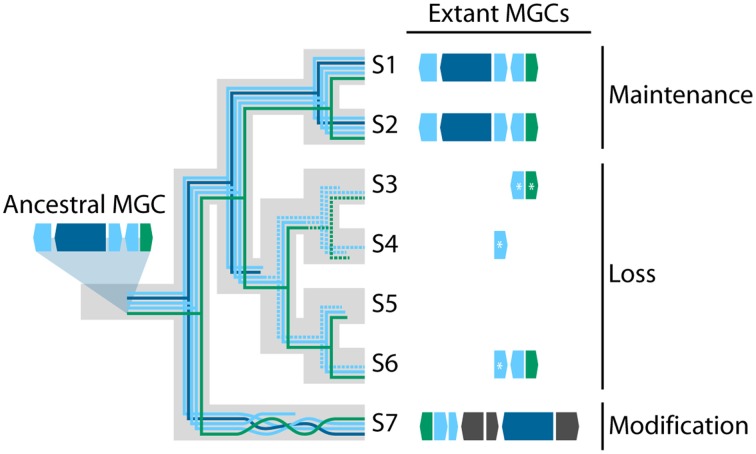Figure 1.
Three evolutionary fates of transferred MGCs. In this hypothetical example, a five gene MGC is transferred into the common ancestor of seven species of fungi (taxa S1–S7). The large gray tree represents the underlying species phylogeny, and each colored line represents the evolutionary history of a gene within the MGC. Dashed lines indicate genes that have been pseudogenized and are no longer functional. Extant MGCs in taxa S1 and S2 have maintained the same number of genes in the same orientation as the ancestral MGC suggesting purifying selection has acted to preserve the MGC's original form and function. In contrast, taxa S3–S6 contain the MGC in varying stages of decay, indicative of neutral evolution or positive selection for its loss. Asterisks (*) indicate pseudogenes. Finally, the MGC in taxon S7 has been modified from its original form, having undergone gene rearrangement, gene loss, and recruited three additional genes (colored in dark gray), which suggests the MGC has experienced diversifying selection.

